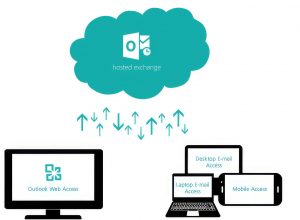So last week I attended Tech-Ed Africa 2011 and had to trek all the way to Durban on South Africa’s east coast, where it became as clear as the lovely South African blue skies … Microsoft is punting their Cloud offering in extra-large doses.
One of the first talks I attended turned out be an interesting conversational talk about the future of the IT Pro and IT Architect over the next couple of years. You may recall from a previous post that Warren Johnson gave us a great overview of a similar nature at the ITProAfrica Cloud Computing Event held in September 2011.
This time around, Jaco Benadé and Johan Klut gave us a lesson in bad acting with a short skit and a very interesting discussion around this topic. I’ve tried to briefly summarise the key points I got from their presentation:
What we’ve all seen recently in offices around the world is how technology is more and more being driven from the consumer side. In previous years the IT department would put down a computer or laptop and tell the user to use it and SHH! However, as of late, more and more users are bringing their own IDroidWinBerry devices to the office and demanding that the IT dude “make it work”. Sure, we as the IT department can refuse, but in the end that old IT whip will have to be laid to rest and we’ll cave like a house of cards. Recognise and accept the shift – Business IT with no limits.
What’s the driving force behind all this then? Where is it all coming from? Well, it’s not really new, it’s just happening a whole lot faster. With a very blurred work/life lifestyle – e.g. work email on my personal phone and social networking on my work PC – it seems as if the shift to always connected as about as real as it can be. Together with the often globally distributed workforce, our businesses now need access to their data. Anywhere and Anytime.
There are of course other business or organisational factors influencing these shifts and none of them are new concepts:
- Businesses Change – Nokia used to mill pulp and SAAB used to build fighter planes for the Swedish government. In today’s rapid change society, a business’s core focus can change very quickly and very unexpectedly.
- Speed of Innovation – every IT department’s worse nightmare: launched today, legacy tomorrow. It’s often a daunting task of trying to keep up with the speed that new technology is released at.
- Agility – How quickly can you, your IT department AND your business change? More importantly, can you keep up?
- Cost – with the rumour of a global recession, we’re all painfully aware how we all need to do a lot more with a lot less.
So, who’s the new architect that your organisation will turn to?
- You will need to be a member of the business team. As we’ve seen, business is the new driving force behind technology and if you have a clear vision of where the business is heading, you can help build the technological platform.
- The architect will realise AND accept that Business Need will outweigh the IT Want. It has already become increasingly difficult to apply IT policies across an entire business without affecting business processes and these exceptions will eventually make way for IT policies based on business processes.
- And of course, with the vast array of technology available and keeping in mind budgetary constraints, you will need to know when to buy your new technology, build it, or with the introduction of more cloud-based services, simply rent it!
In summary, although some of the basic architecture methodologies will remain the same, it is important to realise that the approach to IT Architecture will change and it will probably become more of a strategic business role. Get to know your Business, its Processes and its Needs.
Marlon has been working in the IT Industry for a good number of years, both locally and abroad. He holds a couple of Microsoft Certified Qualications and also studied Business Management and Project Managment. However, he still works in a very technical position as he believes that getting your hands dirty is still the best way to learn.







